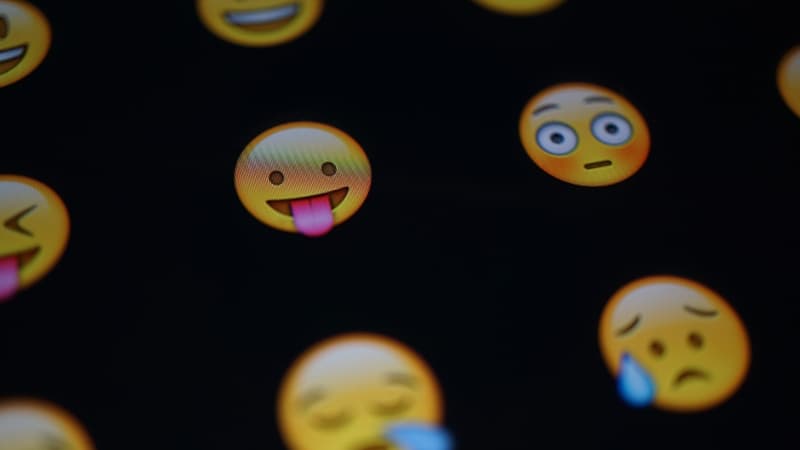Have you ever received a broken heart? Or a handshake? For many, these little emojis amuse or leave them cold. But for a third of Gen Zers (those born between 1997 and 2010), those two images served to end a romantic relationship, according to an adobe studio. Obviously disconcerting to their elders who didn’t grow up with these little icons…
The first drawing emojis really took off in 2008 with the arrival of the iPhone and today there are more than 200 on our keyboards. Since then, they invade or give life to our messages.
Lola, 15, is one of those Gen Zers who “always puts emojis in her messages.” And Sarah, who is in her class, goes further: “We put it on Snapchat all the time. It’s used to express what we feel when we can’t find the right words to write it.” And they are not the only ones multiplying emojis, since young people between the ages of 18 and 24 use an average of 15 per day.
By contrast, 27% of people aged 50 and over say they don’t use emoji frequently in their exchanges. This figure illustrates the generation gap behind the use of these little drawings and the little misunderstandings that can follow.
generation history
Lisa is a French teacher in London, she is very close to her 88-year-old grandmother who lives in Lot-et-Garonne. Her grandmother has always been up to date with technology, but explaining the principle of emojis to her took time.
“Especially since she has a senior phone, so when family sends her emojis, she gets squares in text messages, I didn’t really understand at first,” Lisa recalls with a smile.
So he showed her some tricks like the punctuation technique to create emoticons. “I even gave her a little notice so she could do it on her own. It amuses her a lot, now she texts me a lot with ‘old’ emojis. Unknown smileys when her grandmother gets tangled up with the brushes.
“Old”, these emojis created using punctuation before these little characters with multiple emotions landed on our keyboards. And some had to get used to being “shot” with emojis in their messages, especially those sent by their teenage children.
“Confusing and even a little bewildering”
Like Samira and Alexis. His daughter Robin is now 22 years old, but during his college years “he multiplied the emojis”, his mother amusedly testifies. “He would send us angry faces when we forbade him to go out or heartfelt faces when we agreed. At first, I found it confusing and even a bit disconcerting. I thought to myself ‘our teens will no longer communicate with just emojis and putting an End of Date! the French language is not possible!'”.
Except that today the trend has “almost reversed,” Robin notes mischievously. He doesn’t use emoji as much anymore, he even finds himself “a bit old-fashioned” when his parents “abuse” him. And Samira admits: “In the end it’s pretty good, then there are more and more, so we have a choice. Sometimes I spend more time choosing the right emoji than writing my SMS!”.
matter of perspective
Heart, peach, inverted face… Emojis can also sometimes be a source of confusion or misunderstandings because not everyone interprets them in the same way as shown this survey conducted by Duolingo in July 2022: 74% of those surveyed admit to having had a misunderstanding with their interlocutor because of an emoji.
Among the most misunderstood emojis is the infamous “crying stream” emoji. 25% of those surveyed use it to express tears of joy and 25% to express sadness. The “fishing” emoji is also the source of many funny situations. 33% of those surveyed use fishing to “feel flirtatious” and 37% in a more “traditional” sense. So, what about the famous “aubergine”, a simple vegetable ratatouille for his grandmother but a true sexual allusion for many Internet users?
Since the advent of teleworking, this issue is more delicate than it seems. Without the voice, the look of the interlocutor or just the words to explain it, a simple icon can quickly become difficult to interpret. Is a thumbs up a sign of validation, irony?
The question came up on a Reddit forum when people over the age of 25 were surprised to find that some young people were uncomfortable with this emoji. Worse still, it would be the symbol of a passive-aggressive reaction, verging on the middle finger, the Irish Times explained last year. Expedited form of “ok-thanks-goodbye” to indicate a form of contempt towards the interlocutor.
A little more obvious, the red heart is also an emoji generally prohibited in the professional world to avoid any misinterpretation, even if some generations do not see the slightest concern.
Finally, there are emojis whose meaning depends on the culture: the famous Italian pinched finger means to be hungry in India or “calm down” in some Asian countries. In the end, maybe it’s best to talk to each other…
Source: BFM TV


